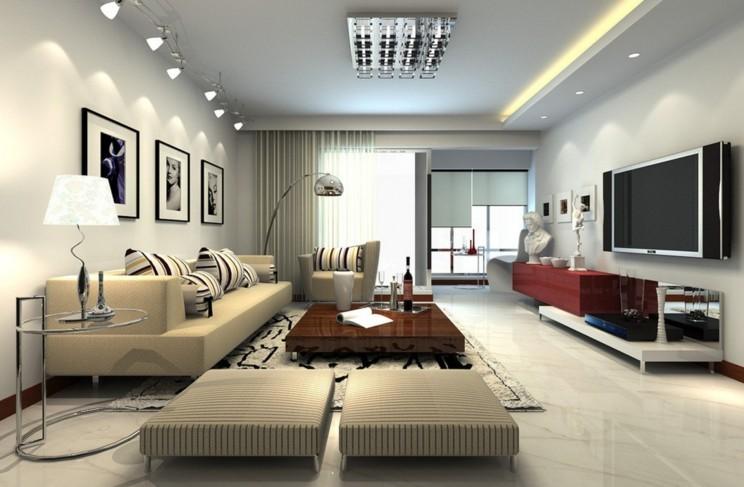Home decor is far more than a mere aesthetic choice; it’s an expression of one’s personality, lifestyle, and values. From the sleek, minimalist designs to the rich, ornate furnishings, the art of decorating a home is both an intimate and dynamic process. Whether you’re transforming a small apartment or redesigning a sprawling house, understanding the principles of home decor can elevate your living space and foster a sense of comfort and beauty.
At its core, home decor involves the arrangement of furniture, accessories, colors, and textures to create a visually pleasing and functional environment. But how do you navigate the vast world of home decor trends, timeless styles, and design principles? Here’s everything you need to know to curate a home that reflects your individuality while offering both style and comfort.
Understanding the Basics of Home Decor
Before embarking on a home decor journey, it’s essential to grasp some foundational concepts. The following elements are key to any well-decorated space:
-
Color Palette
Color is often the first thing that catches the eye when you enter a room. It can drastically influence the mood and perception of a space. Generally, a color palette should consist of three main components: a dominant color, a secondary color, and an accent color. The dominant color covers most of the room, while the secondary color is used on furniture or larger accents, and the accent color pops in smaller items like cushions or artwork.
For example, if you’re going for a serene, calming atmosphere, soft neutrals such as whites, beiges, and pale blues may work well. On the other hand, if you desire vibrancy and energy, rich hues like jewel tones or bright oranges can be incorporated.
-
Lighting
Lighting is perhaps one of the most underappreciated elements of home decor, yet it can make or break the ambiance of a room. Natural light is ideal, as it brings warmth and vitality into the space. However, for areas lacking natural light, you can create a cozy environment with strategically placed lamps, chandeliers, and sconces. The key to effective lighting is to layer it, using ambient, task, and accent lighting to cater to different needs and moods. -
Furniture Arrangement
Furniture serves both a functional and aesthetic purpose. A well-arranged layout can optimize space, foster conversation, and enhance the overall flow of the room. When arranging furniture, always consider the focal point of the room, which might be a fireplace, television, or artwork. The furniture should be arranged in a way that encourages interaction while still leaving room for movement and balance. -
Textures and Fabrics
Textures add depth and interest to any space. A combination of soft fabrics like plush cushions, woven throws, and textured rugs can provide tactile comfort and visual intrigue. Materials such as wood, glass, metal, and stone can also be incorporated to add variety and contrast. Layering textures with intention ensures the room feels inviting, cozy, and sophisticated. -
Personalization
The most impactful rooms are often those that reflect the personality of the inhabitants. Personalizing your space with family photos, travel souvenirs, or cherished artwork creates a unique and meaningful environment. Don’t shy away from mixing vintage with modern pieces, or incorporating heirlooms into your decor. A home that feels personal is one that feels truly yours.
Decoding Popular Home Decor Styles
The world of home decor is rich with diverse styles, each offering its own unique charm. Here are a few popular styles that continue to dominate interior design:
-
Modern Minimalism
Characterized by clean lines, neutral tones, and a focus on function over ornamentation, modern minimalism emphasizes simplicity. This style favors open spaces, geometric shapes, and uncluttered surfaces. The key is to remove unnecessary items and only keep pieces that serve a purpose or bring joy. Neutral color schemes like whites, blacks, and grays dominate, with pops of accent colors introduced through artwork or furniture. -
Scandi Style
Originating from Scandinavian countries, this design philosophy embraces minimalism while focusing on warmth and comfort. Light woods, soft textiles, and neutral tones dominate Scandi interiors, creating spaces that feel both serene and inviting. Large windows to let in natural light are typical, and functional furniture is often stylishly integrated with organic elements like plants and woven baskets. -
Industrial Chic
Taking inspiration from old factories and warehouses, industrial chic is marked by raw, unfinished materials such as exposed brick, steel beams, and concrete floors. The look balances the rough and the refined, with the inclusion of vintage furniture, large metal lighting fixtures, and leather accents. While it’s not for everyone, industrial decor offers a bold, edgy aesthetic that’s both utilitarian and artistic. -
Bohemian (Boho)
For those who crave eclecticism and freedom in their decor, the bohemian style offers an uninhibited approach to interior design. Vibrant colors, intricate patterns, and mismatched furniture create an atmosphere that’s laid-back and creatively inspired. A boho room might feature Moroccan rugs, tasseled cushions, antique furniture, and an abundance of indoor plants. The style encourages self-expression and celebrates individuality. -
Traditional Elegance
Traditional home decor draws from classical designs and is often associated with a more refined, timeless look. Deep woods, rich fabrics, and elegant furniture define this style. Antiques, intricate patterns, and carefully chosen color palettes evoke a sense of sophistication and permanence. It’s ideal for those who appreciate a formal, polished aesthetic that never goes out of style.
Tips for Making the Most of Your Space
Decorating a home isn’t just about creating beauty; it’s also about making your space as functional as it is aesthetically pleasing. Here are some practical tips for optimizing your space:
-
Embrace Multi-Functionality
In smaller homes, it’s vital to make every piece of furniture count. Opt for pieces that serve multiple purposes, such as a sofa bed, a dining table that doubles as a workspace, or ottomans with hidden storage. This can help minimize clutter while maximizing functionality. -
Play with Proportions
While filling your space with large furniture might seem appealing, be mindful of the room’s proportions. Too many oversized items can overwhelm the space, while too many tiny pieces can make the room feel fragmented. Strive for balance in the size of your furniture and decor elements. -
Layer Rugs and Cushions
Adding layers of texture with area rugs, throw pillows, and blankets can make a room feel more inviting. Mix different patterns and materials to create a cozy atmosphere while introducing visual intrigue. -
Use Mirrors to Create the Illusion of Space
Mirrors can be a powerful tool to create the illusion of space in a small room. Strategically placed mirrors can reflect natural light, make a room feel larger, and even enhance the overall aesthetic of your decor.
Conclusion
Home decor is an evolving journey that combines artistry, practicality, and personal expression. Whether you are a fan of bold and dramatic designs or prefer a more serene and minimalist approach, the key to successful home decor lies in harmonizing aesthetics with function. From choosing the right color palette and lighting to incorporating textures, personal touches, and timeless pieces, every element of your home contributes to creating an atmosphere that feels uniquely yours. By exploring different styles and considering your lifestyle needs, you can create a space that not only looks beautiful but also serves as a sanctuary where you feel truly at home.

